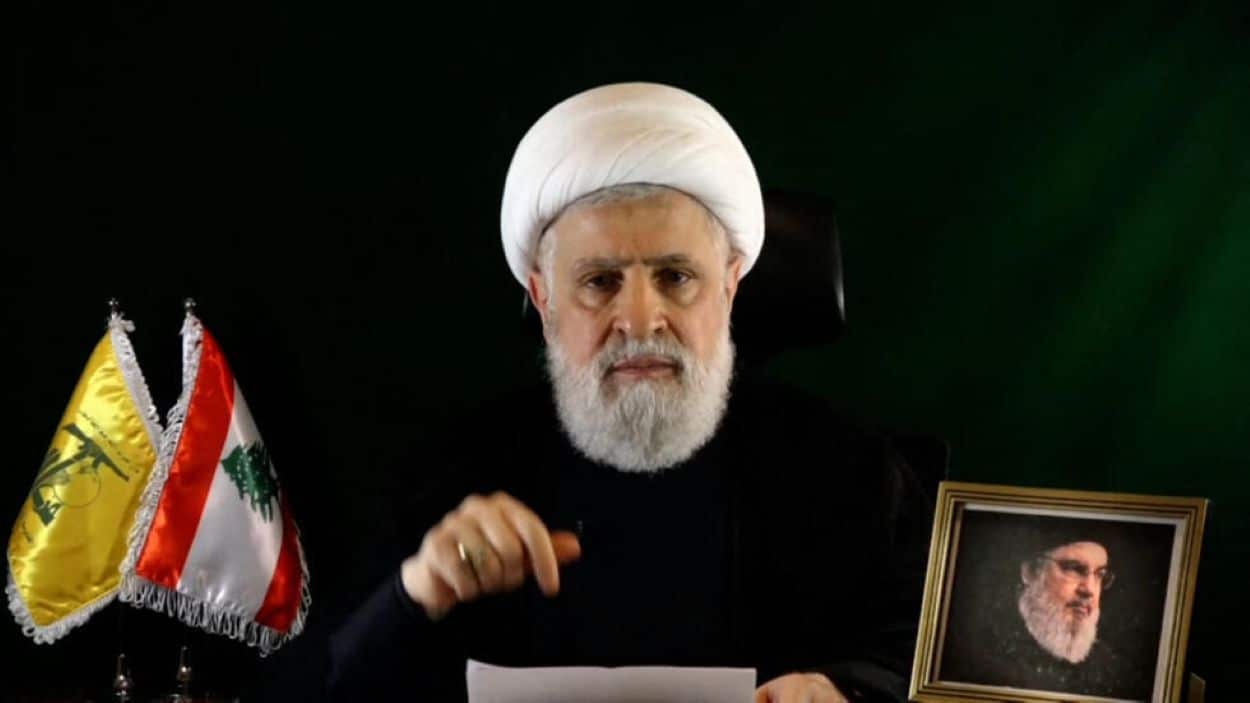Sheikh Naim Qassem, born in Beirut in 1953 to a family from Lebanon’s south, began his political activism with the Lebanese Shi’ite Amal Movement.
On Tuesday, Hezbollah elected Qassem, the deputy secretary general and a senior figure in the Iran-backed movement for over three decades, as the new head of the Lebanese armed group.
Speaking from behind curtains at an undisclosed location on October 8, Qassem described the conflict with Israel as a battle of resilience, asserting that Hezbollah would not be the first to falter. He confirmed that the group’s strength remains robust despite significant challenges from Israel.
Moreover, Qassem supported efforts by Nabih Berri, parliament speaker and a Hezbollah ally, to negotiate a ceasefire. Notably, he did not demand a Gaza truce as a precondition for ceasing hostilities against Israel, a first in such declarations.
This address followed closely after the suspected Israeli targeting of Hezbollah’s senior figure, Hashem Safieddine, and the assassination of Hezbollah’s secretary-general, Sayyed Hassan Nasrallah, 11 days prior. Hezbollah confirmed Safieddine’s death on October 23.
Qassem, appointed deputy chief in 1991 by then-secretary general Abbas al-Musawi, who was killed in an Israeli attack in 1992, has been a prominent spokesman for Hezbollah. He continued in his role when Nasrallah took leadership and has frequently interacted with foreign media, especially during the recent increase in hostilities across the Israeli border.
On October 8, Qassem made his second televised speech since the escalation of conflict with Israel in September, marking him as the first of Hezbollah’s top leaders to speak publicly after Nasrallah died in an Israeli air attack on September 27.
In a speech on September 30, Qassem announced that Hezbollah would promptly select a successor to Nasrallah and would persist in its conflict with Israel, aligning with Palestinian efforts.
“What we are doing is the bare minimum… We know that the battle may be long,” he stated during a 19-minute address.
After leaving the Amal Movement in 1979, influenced by Iran’s Islamic Revolution, Qassem participated in foundational meetings that led to Hezbollah’s creation in 1982 following the Israeli invasion of Lebanon. Since then, he has coordinated the group’s parliamentary election campaigns, starting in 1992.
In 2005, Qassem authored a history of Hezbollah, providing a rare insider perspective on the organization. Unlike Nasrallah and Safieddine, who wear black turbans signifying their descent from the Prophet Muhammad, Qassem is known for wearing a white turban.






